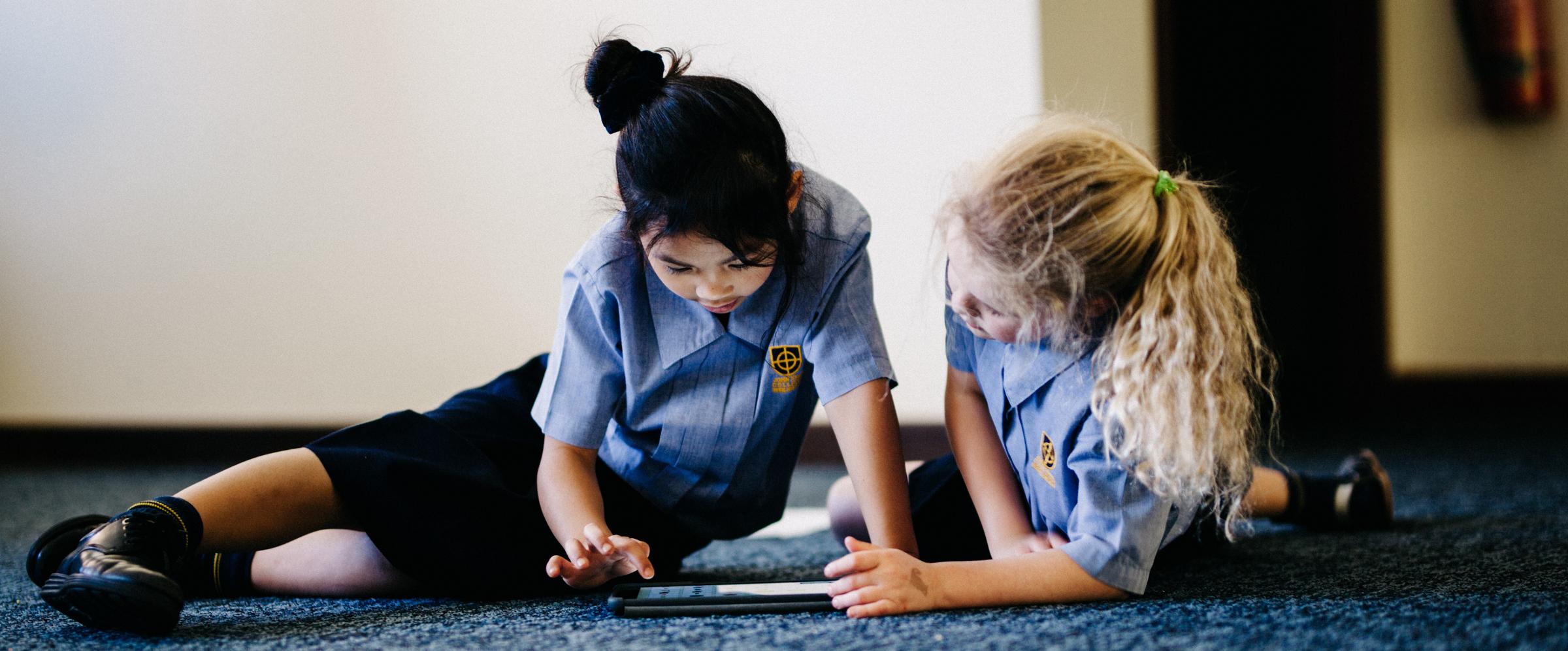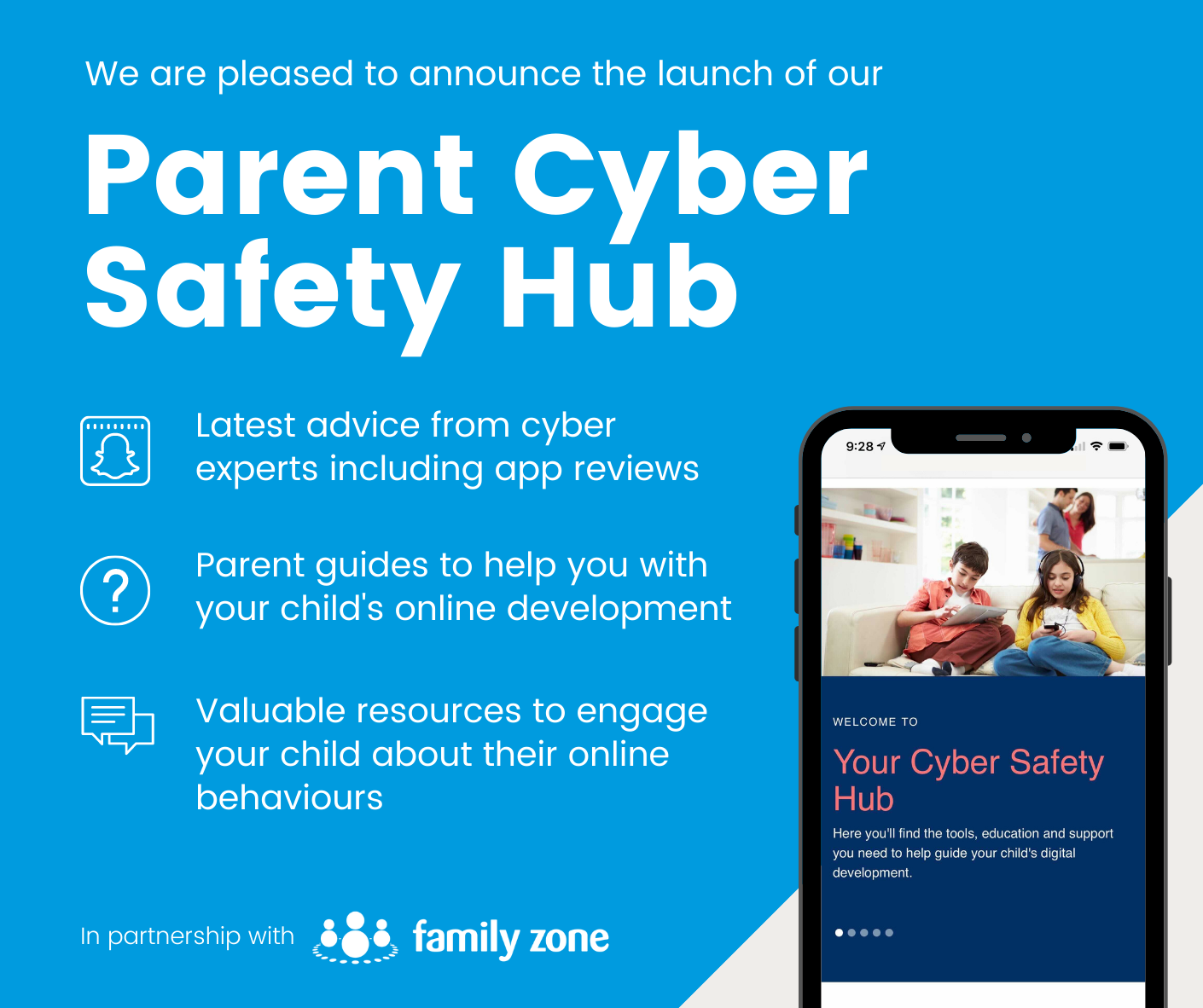Cyber Safety

Introducing our new Cyber Safety Hub
We are delighted to introduce you to a new resource made available to you through our partnership with Family Zone - our new school Cyber Safety Hub.
As you may already be aware, our partnership provides your family with access to the Family Zone tools to use at home with your children if you wish. The purpose of the Cyber Safety Hub is to complement those tools with practical guidance and information to further support you in engaging with your children in their digital development. These tools and resources also allow the school and parent body to work together on creating a holistic approach to guiding each student's online journey.
You can access the Cyber Safety Hub using the link below:
https://johnxxiii.cybersafetyhub.com.au/
About the Parent Cyber Safety Hub
The Cyber Safety Hub includes resources to help your family better understand the different Family Zone tools available to you and how to use them, plus access to regular cyber safety events to help you stay informed about the latest digital trends.
Also, the Cyber Safety Hub provides expert advice from leading cyber experts, ySafe, on the most pertinent issues and frequently asked questions around platforms like TikTok, Fortnite, Instagram, and more. There are app reviews with age and safety recommendations, along with a range of guides to help ensure healthy boundaries around screen-time & gaming, plus step-by-step instructions for using parental controls and filtering out inappropriate content.
We are very excited to be able to offer you this level of expertise and support. We look forward to working closely with you as we develop the cyber safety conversation within our school community.
Sick of nagging them about screen-time? Try this instead
Research has uncovered a more effective way of altering screen habits - and it’s all about focusing on everything that ISN'T screen-time.
Because when you get right down to it, the most damaging thing about our kids' love affair with their devices is simply the way it nudges aside the rest of life - aka, all the other fun things they could - and should - be doing.
Getting the balance back is easier when you take a positive approach, new research shows.
It’s the difference between “avoidance” versus “approach” goals, explains education researcher Meghan Owenz of Penn State University.
Avoidance v. approach
Avoidance goals - think diets or quitting smoking - are notoriously tough to achieve. They put us in bad moods and make us stroppy. And that’s because they’re all about deprivation.
Being deprived of something that makes you happy - or seems to - is no fun at all. To achieve an avoidance goal takes tremendous commitment and self-control.
But when it comes to screen-time limits, it’s your commitment and self-control that’s the driving force - not your child’s. And that’s exactly where the difficulty lies, and where the pestering and whining begin.
Research shows that 'approach' goals are associated better moods, greater effectiveness and more persistence.
“Approach” goals, on the other hand, simply redirect attention, in a positive way, toward a desired outcome. An approach goal is not about taking away something undesirable, but about adding or encouraging something more positive.
It's like dieting ...
Research shows that approach goals are associated better moods, greater effectiveness and more persistence.
Studies of weight-control have shown that clearly. Over time, weight loss is actually greater for people who are encouraged to eat more fruits and vegetables than it is for those on fat- and sugar-reduced diets.
“Similarly, parents and caregivers can edge out screen-time by encouraging meaningful activities that have long been shown to promote child development,” explains Professor Owenz.
SPOIL 'em!
So what kind of activities are those? Professor Owenz uses the acronym SPOIL to spell it out:
- S ocial activities
- P lay
- O utdoor time
- I ndependent work
- L iteracy
Social activities. Spending time in face-to-face interaction with parents, friends and brothers and sisters gives kids the space they need to develop empathy and cooperation skills.
What’s more, adds Owenz, because social activity is “inversely related to recreational screen-time” - in other words, when one goes up, the other goes down - “emphasising them can decrease screen-time naturally.”
Play. Free play not only keeps them occupied - and will be preferred to screens naturally when on offer - it has been linked to a huge range of skills, from impulse-control to achievement in maths and language. Note that the “free” in “free play” means caregivers step back, and give the child space to find their own fun.
Outdoor activities. Again, the relationship with screen-time is inverse. The more hours kids spend outside, the less time - naturally - they will spend on their devices.
Independent work. You may or may not be surprised to learn that kids’ participation in household chores has nose-dived since the advent of the digital age.
The reasons why are complex. But one thing is crystal clear: kids who do chores have higher self-esteem, achieve more academically and are more self-sufficient than kids who don’t.
Literacy. Literacy is so much more than sitting down to read a book now and then. It involves all forms of reading and writing - including being read to and listening to audiobooks.
Kids who develop literacy skills are invariably better able to understand the perspectives of others. They are also less likely to overdo their recreational screen-time.
Bottom line? Encouraging positive activities like these - and setting pester-proof screen-time limits with age-appropriate parental controls - is the most effective way to bring balance to your family’s digital life.
Reference: https://www.familyzone.com/anz/families/blog/sick-of-nagging-screen-time-try-this


